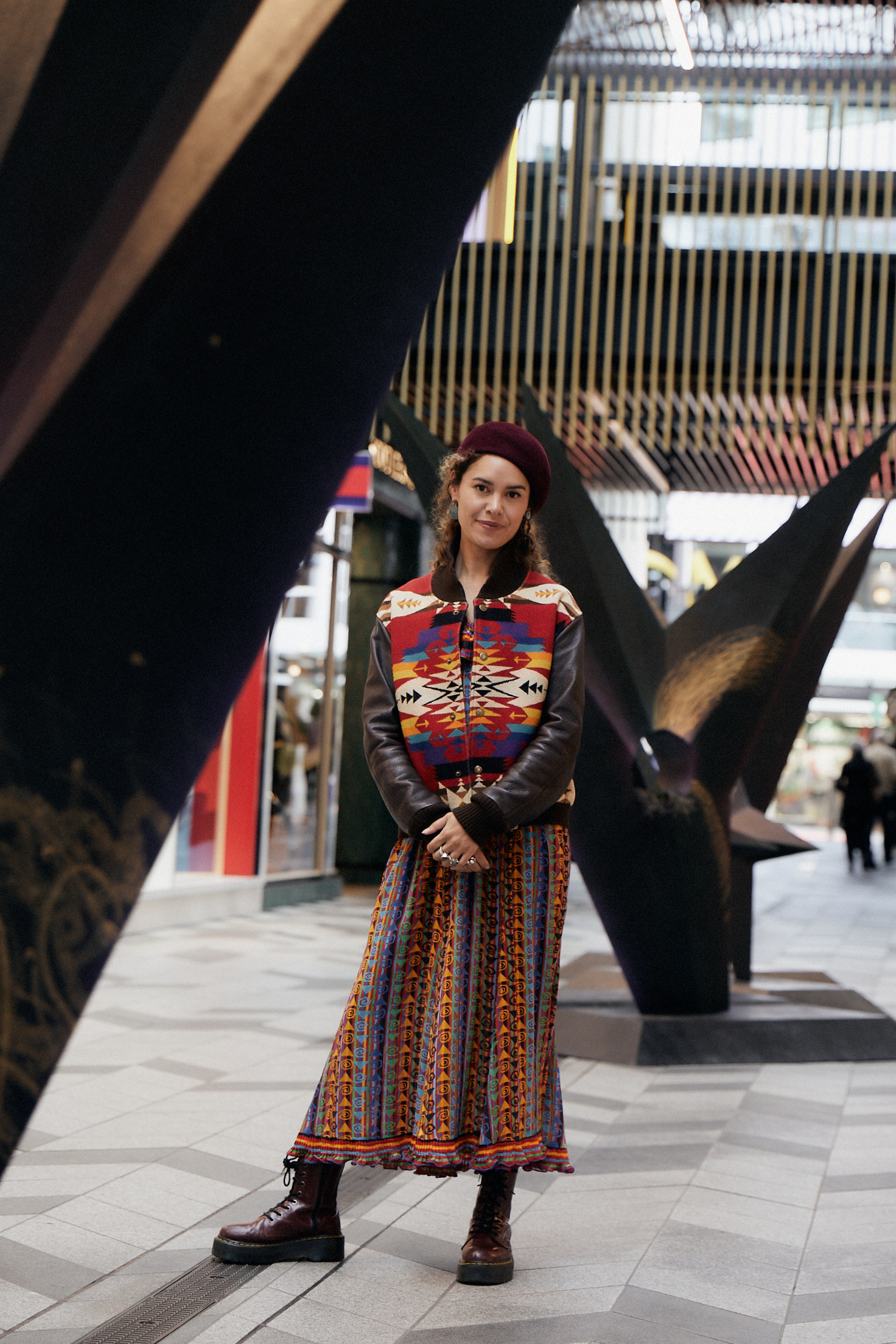What do you do?
I’m a māmā, wife and artist. I also curate, manage and co-ordinate projects which aim to captivate an audience through art and indigenous storytelling. For example, Whānau Mārama on now at Commercial Bay, and Hauhake which was held at Objectspace in 2020. I try and find pathways to continue to serve artists and audiences by facilitating unexpected partnerships and collaborations.
What are the challenges in your work?
Taste mainly. I worry that our most radical artists, those who are leading us into the indigenous future, aren’t recognised enough in the collector market because they fall outside of the ‘prestige qualities’ and ‘investment potential’ that many collectors look for. This applies to my own practice too. But if you think an artist’s work is important – ‘work’ being the artwork plus it’s social impact and the historical documentation it represents – then consider buying or commissioning a piece if you have the budget. It may not be to the taste of your friends and whānau or it might not be the artist you have been recommended to collect by an art advisor – but if you feel an emotional response to a work then go with your gut. You don’t need anyone to validate that choice for you.
What artworks do you have in your home?
I believe a whare should be a fluid place to experiment and celebrate your life rather than a site to curate. My home is typical of most artists with a mix of half-made works, art swaps, heirlooms, textiles, beach finds, little arrangements of pebbles and leaves, photographs and my son’s art. It all moves around constantly – things come and go depending on what stories or memories we are looking to. During the lockdown we put works by our friends in the most prominent places and I packed away my own pieces.
What images are pinned to your studio wall?
John Miller postcards from his exhibition at Objectspace and my son’s drawings.
The first artwork that made an impact on you?
Zygotic Acceleration by Jake and Dinos Chapman. It’s a harrowing work I saw during a school art trip to London when I was 14. I had just moved to the UK with my māmā. It was exhibited in the original Saachi Gallery in London as part of a provocative group show of British artists. I was totally confused by all of the emotions and feelings pulsing through my body when the sculpture came into view – I knew it was important to try and make sense of it. I had so many pātai – who, how, why was this made? It sparked my interest in exploring consumer culture and the importance of taking risks – being bold.
What are you reading?
A Bathful of Kawakawa and Hot Water by Hana Pera Aoake.
What is art for?
For me, it is a way to share perspectives and highlight the gaps between cultures and our knowledge of them.
During my formative years growing up in England, I didn’t have any Māori whānau around me because I was with my British whānau and I was going through culture shock. It was the art of first generation Black British artists, such as Chris Ofili, that offered examples of cultural hybridity and cultural translation that I related to. Ofili was the first Black artist to win the Turner Prize (1998), his work from that period was provocative and fleshed out the impossibility of carrying two cultures equally and at the same time; that there is always a residue and left over aspects of ourselves which may not translate. It is the residual aspects of myself that I like to make work from.
What’s next?
Time to process all the projects of this year and plan something new.
